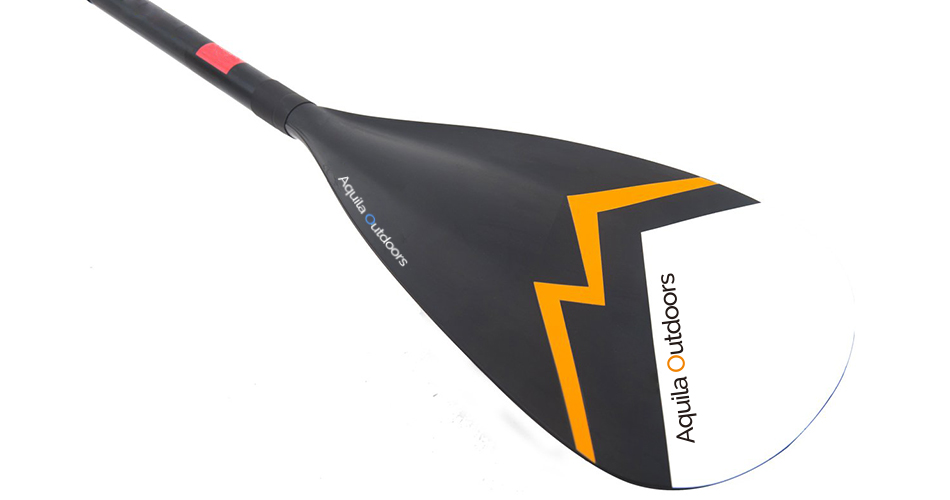
Analysis of SUP paddle
Oar board, paddle board, so the word "paddle" on this oar board is the bottom of the word "wood", not the bottom of the word "pulp" of the soya-bean milk.
So with the help of today to talk about "oar" opportunity, we once again emphasize that the key word of the oar board "oar" word, we must not make a wrong word.
Common OARS, there are generally: aluminum OARS (with the paddle standard), carbon OARS, glass fiber half carbon OARS, these three.
Their characteristics are as follows:
Aluminum paddle: low price, nylon paddle, aluminum alloy paddle, paddle hard, heavy, if not in the paddle filled with foam material, it is easy to sink into the water.
The weight is generally between 900-1300 grams, the lighter aluminum OARS generally thin wall easily broken, the thicker aluminum OARS row up very heavy.
But nylon paddle is not afraid of knock against relatively leather solid durable, aluminum paddle is basically three OARS.
Carbon paddle: the price is higher than the aluminum paddle, generally need to buy separately, the price is a few hundred, many thousands.
Generally divided into three sections, two sections, fixed length (single section).
The weight of carbon oar is light, two, three carbon OARS are general 600-700 grams or so, single fixed length oar is general in 420-520 grams or so.
Generally speaking, carbon OARS are at least half as light as aluminum OARS, making them feel better to use.
Usually you don't want to use aluminum if you use three carbon OARS, you don't want to use three carbon OARS if you use one carbon of fixed length.
Carbon oar is more than aluminium oar flexibility good force output is even, but tube wall is thinner than aluminium oar, 0.6 kg carbon oar, intensity half inferior to 1.3 kg or so aluminium oar, so the case that carbon oar is pulled to break oar is much more common than aluminium oar.
There is a myth that the carbon blade must be better than aluminum OARS, is not easy to break, carbon blade actually easier to break than aluminum OARS, mainly is the blade hardness, all the power to to paddle lever, so the oar of power, especially the dragon boat oarsmen, delimit SUP paddle broken frequently, whether hundreds of yuan carbon paddle, the carbon paddles of thousands of yuan, as long as all of a sudden, will be broken.
So when we use carbon oar, must not suddenly force, according to my observation, broken oar situation most often occurs in the dragon boat oarsmen.
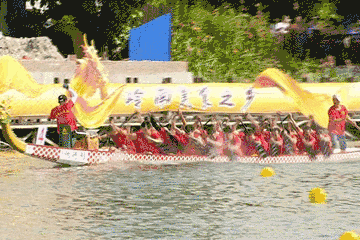
Dragon boat oarsmen usually just burst, head jabbing.
Is the so-called: a fierce operation such as tiger, break oar easy and freely.
This is mainly related to the difference between dragon boat OARS and SUP OARS.
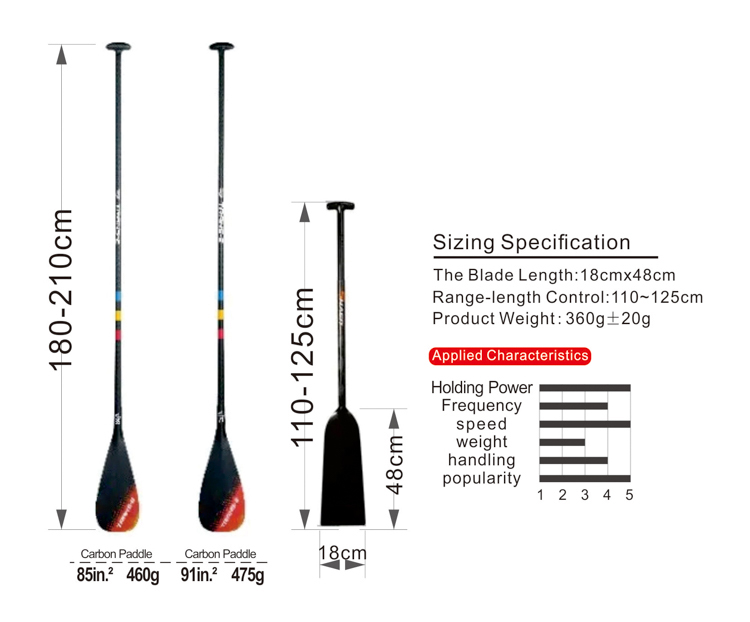
SUP paddle longer, more torque, if the dragon boat paddle method is still used to row the rod is difficult to bear.

The length of SUP paddle is generally 180-210. The force of standing posture is output with the strength of the whole body. The length of the dragon boat paddle is generally 110-125, the force of sitting posture is generated, and the middle and lower part of the paddle is held.
The weight of the two is the same, so once the dragon boat rowers use the dragon-boat stroke, then no matter what the paddle, the final easy to break!
Therefore, I highly recommend the dragon-boat players to use a gentle and even way of power output when rowing the board!
Carbon paddle itself good characteristics, mainly light, there is appropriate toughness, so very suitable for SUP stance paddle use, according to the characteristics of carbon paddle, and divided into: fixed-length, two, three OARS!
Features of fixed-length paddle: most expensive, lightest, best to use, completely waterless, super portable, essential for advanced paddleboard enthusiasts.
Features of three OARS: relatively light, super portable, water, long-term use of the interface will be loose and wear, beginners must.
Features of two OARS: slightly lighter than three, slightly easier to carry than fixed length, price in between.
Say that finish common carbon oar, say again: glass fiber half carbon oar
There are two kinds of half-carbon paddles. One is made partly of carbon fiber, such as carbon fiber in the paddle and nylon in the paddle. This is called a half-carbon paddle.
The other is made entirely of fiberglass and looks like a carbon paddle, also known as a half-carbon paddle, which is very difficult to use!
The characteristics of glass fiber half carbon oar: the weight is big, the weight of general glass fiber oar is about 800-900 grams, the weight is close to aluminum alloy oar.
This is not the worst characteristic, the worst characteristic of the fiberglass paddle is the Q-tip!
Just like the elasticity of a crossbow, if you are lucky enough to have a fiberglass SUP paddle, its elasticity will make you feel like you are pulling a spring, and the force is hard to output, which is very unpleasant.
And glass fiber SUP paddle looks like carbon paddle, the price is generally lower than carbon paddle half, so the first half of the price can be obtained from a distance is a carbon paddle visual experience!
That's probably why the fiberglass half-carbon paddle still exists.
----------------------------------
After finishing the classification of SUP blade material, let's talk about the characteristics of different blade areas!
----------------------------------
In general, the blade area, how many square inches, this area method we are not used to understand, so today we simply rough measuring blade length + width to give you an intuitive feeling!
From left to right:
Left 1 single water division large black fixed length oar
Left 2 double split 85 square inch OARS
Left 3 Shihang SH kayak paddle with superior wooden handle
Left 4 with the plate complimentary double water aluminum alloy paddle

Single water divider, fixed length black carbon paddle: length 41 width 20.5
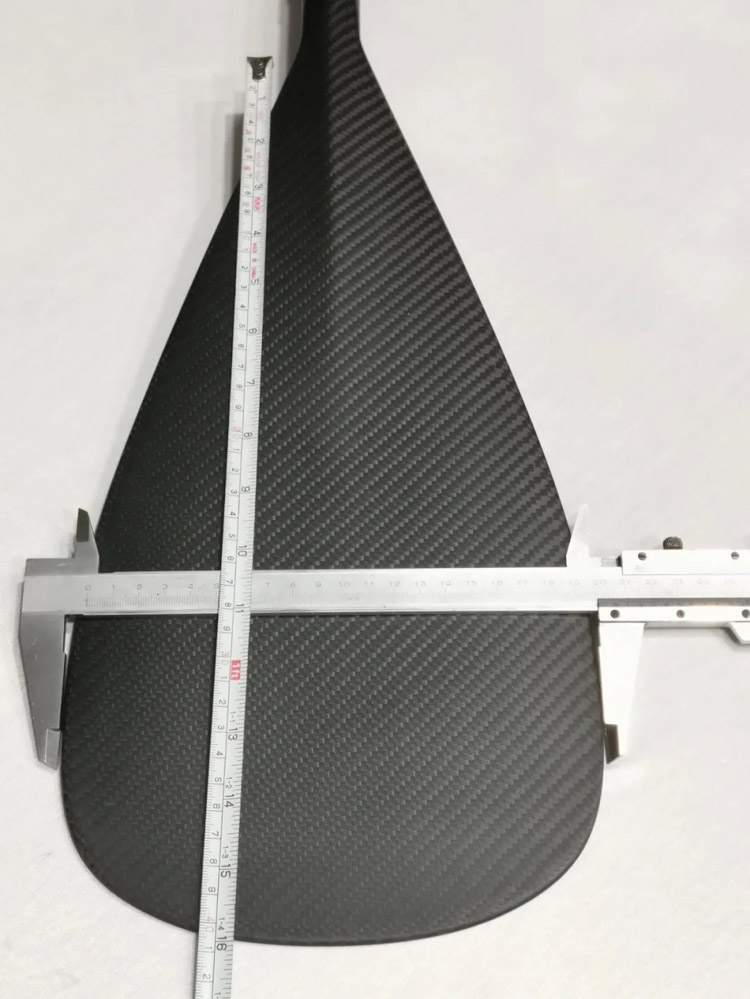
Double divider, 85 square inches. Small paddle carbon: 41 x 18.5

Shiheng SH Single-water High grade wooden handle canoe carbon paddle: length 41 width 20.5 (same as large black carbon paddle)
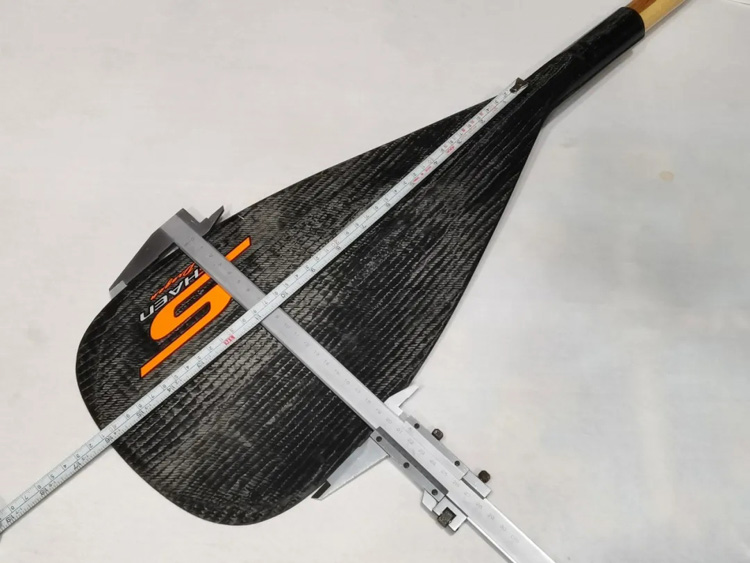
Ordinary three-section double water alloy-alloy paddle with board: length 43*20.2

In addition to the above four, we also took photos of some other common paddles.
Three large black carbon paddles with single water division: length 41 width 20.5 (same as large black carbon paddles)
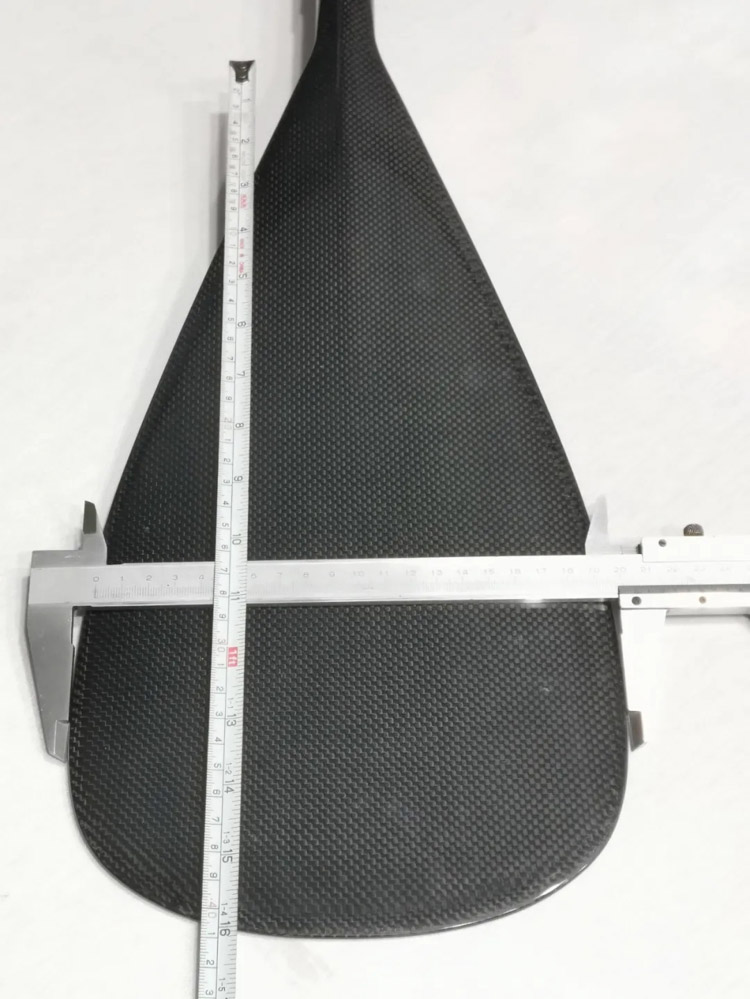
Old water-free large black carbon paddle: length 43 and width 21 (by far the largest area)
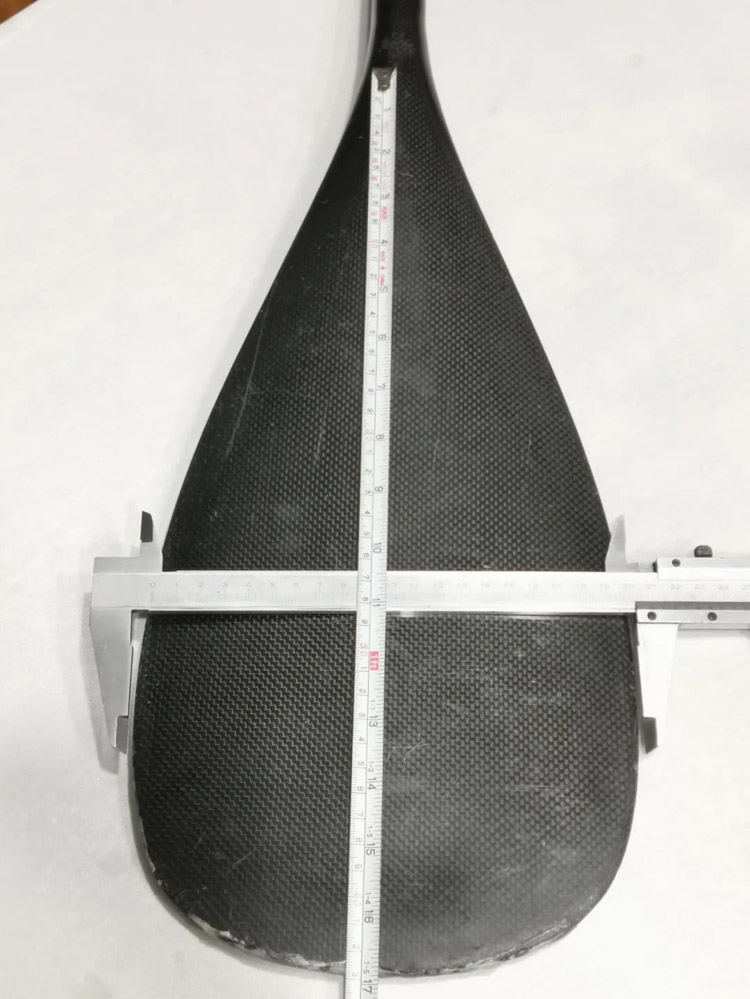
Decathlon half-carbon waterless paddle is 40 by 18.5

Creative TRANS-E Children's paddle: 36 x 16.3
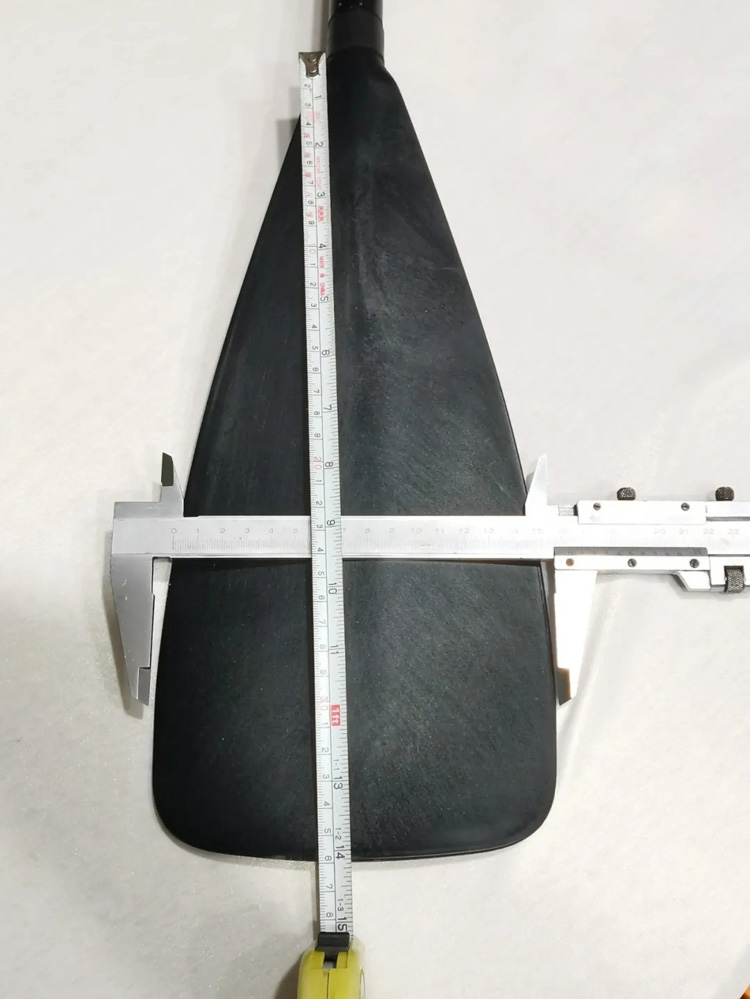
Ultra light aluminum rod plastic children paddle: length 34.5 width 15.2
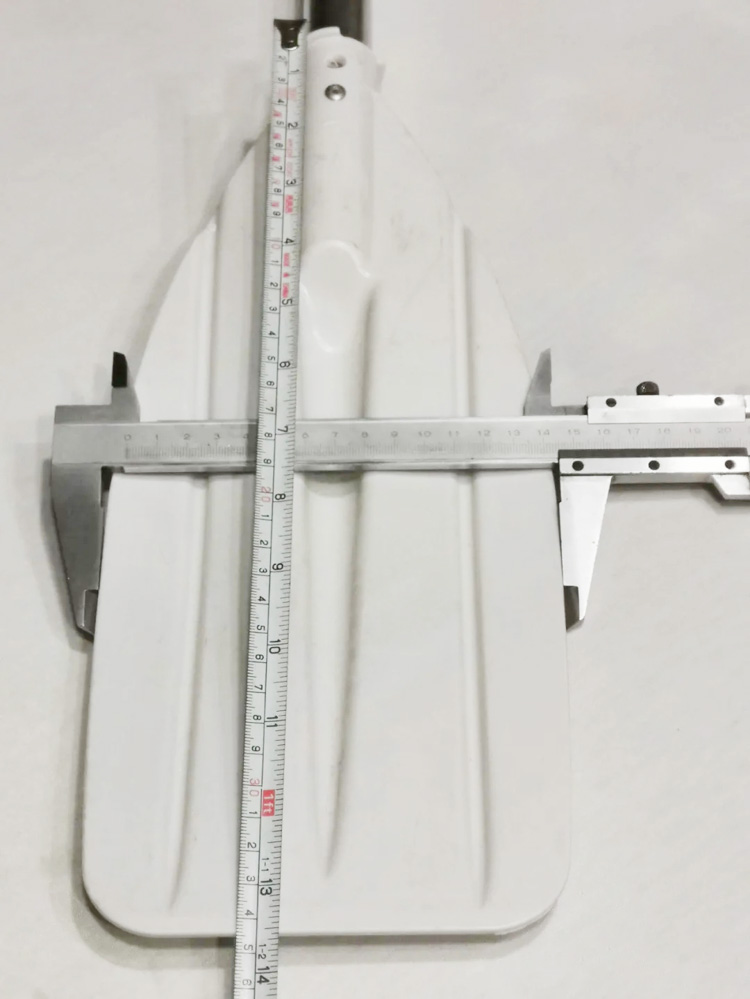
Make a table, you can see at a glance:
The size of the aluminum blade with our common paddle board is about 41*20.2, which is basically the same as the size of the large black carbon paddle.
The average 85-square-inch blade is small, about 41 by 18.5, and about 2 centimeters narrower than the larger black-carbon blade.
Children OARS are smaller, generally 36*16 blades, suitable for children's power output.
The benefits of large blade area are easier to practice catching, single-side straight strokes, backstroke support, and leisure low-frequency long strokes.
The downside of having a larger blade is that it's slightly heavier and more powerful oarsmen are more likely to break their OARS. (Of course, a smaller blade should break as well, and there aren't constant OARS.)
The benefits of smaller blades: shorter sprints, higher paddles, faster starts, and a later break for violent runners.
Long distance RACES can be maintained with medium and high paddle frequency.
The smaller blades also weigh less.
The disadvantages of small blade area are that the efficiency of leisure rowing is not as high as that of large blades, and it is more difficult for beginners to practice catching water and backstroke support than large blades.
It's harder to get and more expensive.
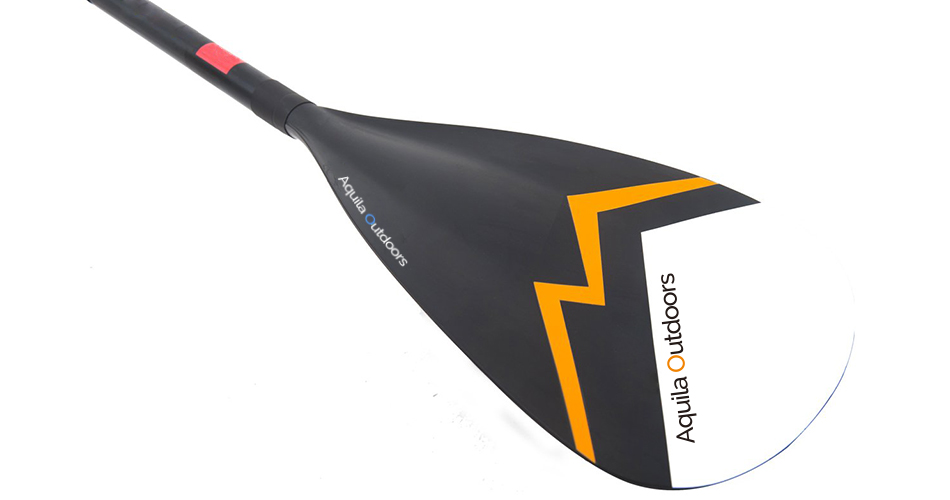



 yuanfang627
yuanfang627